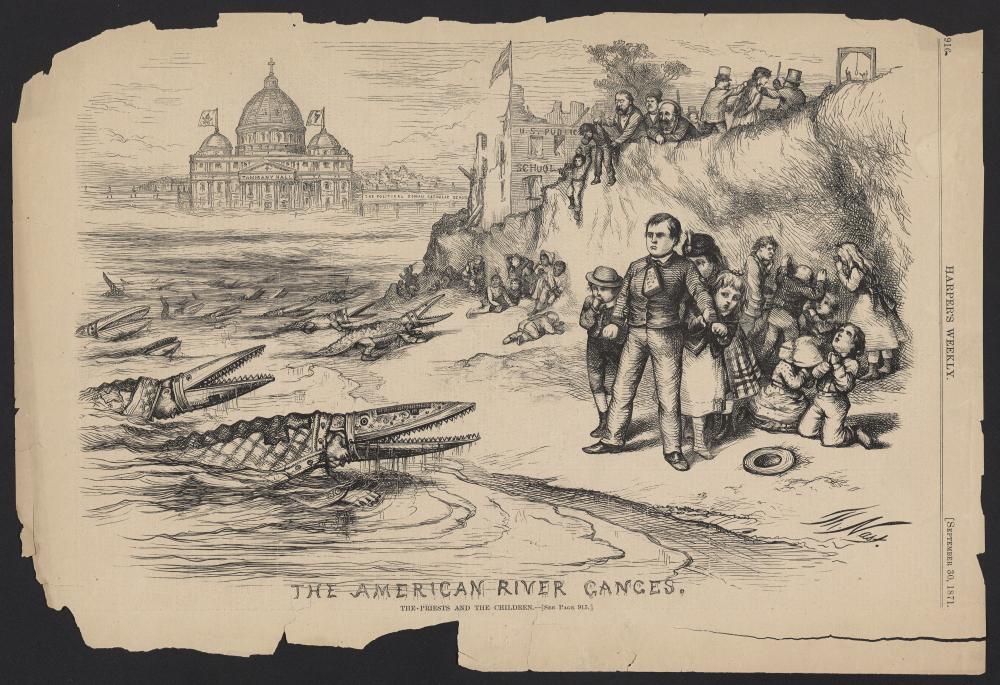A Closer Look at Eligibility for Paycheck Protection Program Loans
By Bonnie M. Wyllie, JD, LLM (Taxation) O’Neill CPA & Business Advisor and Sean O’Neill, CPA, O’Neill CPA and Business Advisor
Bottom Line:
· Under the text of the CARES Act itself, organizations meet the size eligibility criteria for a PPP loan if the organization has equal to or fewer than the greater of: (a) 500 employees, or(b) the applicable SBA size standard.
· Additionally, the Treasury/SBA FAQs clarify that organizations can also qualify for a PPP loan if the organization meets the SBA alternative size standards, which are based on the organization’s financial position.
· Specifically, organizations meet the alternative size standard if: (i) the maximum tangible net worth of the applicant is not more than $15,000,000; and (ii) the average net income after Federal income taxes (excluding any carry-over losses) of the applicant for the 2 full fiscal years before the date of the application is not more than $5,000,000.
-----
As described in NLI’s previous posts, the Coronavirus Aid, Relief and Economic Security Act (“CARES Act”) establishes a Paycheck Protection Program (“PPP”) designed to provide forgivable loans to help businesses survive the economic strain due to COVID-19.
Eligibility for the PPP loans is based on several elements, including the organization’s size.
The language of the CARES Act outlines two tests through which the organization can meet the size element of the eligibility criteria.
[i] Both of the tests in theCARES Act are based on the size of the applicant organization’s workforce. After the CARES Act was passed, the TreasuryDepartment and Small Business Administration (“SBA”) issued frequently asked questions (“FAQ”) which clarify the availability of a third method through which organization can meet the size element of the eligibility criteria. [ii]
Under the text of the CARES Act itself, organizations can satisfy the size eligibility criteria for a PPP loan in one of three ways: (1) having no more than 500 employees, (2) meeting the applicable SBA size standard for the organization’s industry, or (3) meeting the SBA alternative size standard, which are based on the organization’s financial position.
Below are brief summaries of each the three methods through which an organization can meet the size element required to qualify for a PPP loan.
Method #1: Workforce Size
An organization could be eligible to apply for the PPP loan if it has no more than 500 employees. [iii]
Method #2: SBA Size Standards
If the applicant organization has more than 500 employees, it would look to the SBA’s industry-specific “size standards” for number of employees to determine its eligibility for the PPP loan. The Small Business Administration (“SBA”) size standards “define whether a business entity is small and, thus, eligible for Government programs and preferences reserved for small business concerns. Size standards have been established for types of economic activity, or industry, generally under the North American Industry Classification System (NAICS).” [iv] The size standards are based on either revenue or workforce size. [v] Under the CARES Act legislation, if organizations have a workforce at or below the SBA’s workforce size standards, the organization will meet the size eligibility criteria for the PPP loan. Additionally, based on SBA guidance, an applicant organization can also use the SBA size standards for revenue to establish the organization’s size eligibility for a PPP loan.
Method #3: Alternative Size Standard
Even organizations which have more than 500 employees and more than the applicable workforce or revenue size standard might be eligible using the SBA “AlternativeSize Standard.”
The Alternative Size Standard includes two elements: [vi]
(i) the maximum tangible net worth of the applicant is not more than $15 million; and
(ii) the average net income after Federal income taxes (excluding any carry-over losses) of the applicant for the 2 full fiscal years before the date of the application is not more than $5 million.
Guidance from the SBA
The Treasury Department and SBA have issued guidance [vii] confirming the availability of these three methods to assess whether an organization meets the size standard eligibility under the PPP:
“2. Question: Are small business concerns (as defined in section 3 of the Small Business Act, 15U.S.C. 632) required to have 500 or fewer employees to be eligible borrowers in the PPP?
“Answer: No. Small business concerns can be eligible borrowers even if they have more than 500employees, as long as they satisfy the existing statutory and regulatory definition of a “small business concern” under section 3 of the Small BusinessAct, 15 U.S.C. 632. A business can qualify if it meets the SBA employee-based or revenue-based size standard corresponding to its primary industry. Go towww.sba.gov/size for the industry size standards.
“Additionally, a business can qualify for the Paycheck Protection Program as a small business concern if it met both tests in SBA’s “alternative size standard” as of March27, 2020: (1) maximum tangible net worth of the business is not more than $15million; and (2) the average net income after Federal income taxes (excluding any carry-over losses) of the business for the two full fiscal years before the date of the application is not more than $5 million.
“A business that qualifies as a small business concern under section 3 of the Small BusinessAct, 15 U.S.C. 632, may truthfully attest to its eligibility for PPP loans on the Borrower Application Form, unless otherwise ineligible.”
If your organization thinks it may be eligible to apply for a PPP loan using any of these three methods and the organization’s leadership has determined that a PPP is consistent with the organization’s religious mission and other strategic priorities, you should quickly seek professional help to file the loan application. It is highly likely that the additional funding for the PPP loan will quickly runout.
_______________
Bonnie Wyllie has over thirty years of experience in tax. Before joining O’Neill CPA & Business Advisors, she provided charitable planning for Lukinovich Law Firm. Prior to joining Lukinovich, she worked as aDirector with the regional firm, Laporte CPAs & Business Advisors and KPMG. She has extensive experience in all aspects of nonprofit, individual, estate, trust, and tax compliance with a specialization of nonprofit tax consulting and compliance. Bonnie is a frequent lecturer and provides individualized training to nonprofit boards and executives.
Bonnie received her Bachelor of Science and Bachelor of Music from Loyola University, her Juris Doctor from Loyola University, and her LL.M. degree in taxation from Georgetown University Law Center. She has been certified by Board Source to be one of their governance trainers, and she earned the AICPA Nonprofit Certificate as well as a nonprofit management certificate. In March 2009, she published an article in the Journal ofAccountancy, “The Redesigned Form 990, Advising Nonprofit Organizations.” She was the recipient of the Order of St. Louis medallion in recognition of her service in the Archdiocese of New Orleans.
Sean O’Neill has been consulting on accounting, business, and tax matters since 2007. Sean specializes in business consulting, streamlining small business accounting departments, strategic tax planning, and financial consulting. Prior to starting O’Neill CPA & Business Advisors, he began his career with a regional CPA firm, advising high net worth families on their business strategy, accounting procedures, and tax strategies, as well as consulting with nonprofit organizations. Sean has consulted with individuals, businesses, and nonprofits throughout the United States, as well as Europe, Asia, and Africa.
Sean received his Bachelor of Science in Accounting and Masters of Science in Accounting from University of New Orleans. Sean is a member of several professional organizations. He is active in the community, serving on the board of nonprofits and being actively involved in Sean Payton’s Play It Forward Foundation.
_________
[i] 15 USC §636(a)(36)(D)(i)--- (D) Increased eligibility for certain small businesses and organizations.
(i) In general.—During the covered period, in addition to small business concerns, any business concern, nonprofit organization, veterans organization, orTribal business concern described in section 657a(b)(2)(C) of this title shall be eligible to receive a covered loan if the business concern, nonprofit organization, veterans organization, orTribal business concern employs not more than the greater of—
(I) 500 employees; or (II) if applicable, the size standard in number of employees established by the Administration for the industry in which the business concern, nonprofit organization, veterans organization, orTribal business concern operates.
[ii] 15 USC § 636(a)(36). ThePaycheck Protection Program (“PPP”) was enacted into law by Public Law 116-136Section 1102. This provision stated it was amending Section 7(a) of the Small Business Act (15 USC§ 636(a)).
[iii] 15 USC §636(a)(36)(D)(i)(I).
[iv] 13 CFR § 121.101. This is found in 13 Code of Federal Regulations Chapter I. Part 121. SmallBusiness Size Regulations
[v]13 CFR § 121.201 contains the table for the size standard by industry
[vi] 15 U.S. Code §632(a)(5)--(5) Alternative Size Standard
(A) In general. The Administrator shall establish an alternative size standard for applicants for business loans under section 636(a) of this title …that uses maximum tangible net worth and average net income as an alternative to the use of industry standards.
(B) An applicant for a business loan under section 636(a) of this title… may be eligible for such a loan if— (i) the maximum tangible net worth of the applicant is not more than $15,000,000; and (ii) the average net income afterFederal income taxes (excluding any carry-over losses) of the applicant for the2 full fiscal years before the date of the application is not more than$5,000,000.
[vii]Paycheck Protection Program Loans—Frequently Asked Questions (FAQs) (As of April 23, 2020).
.png)




